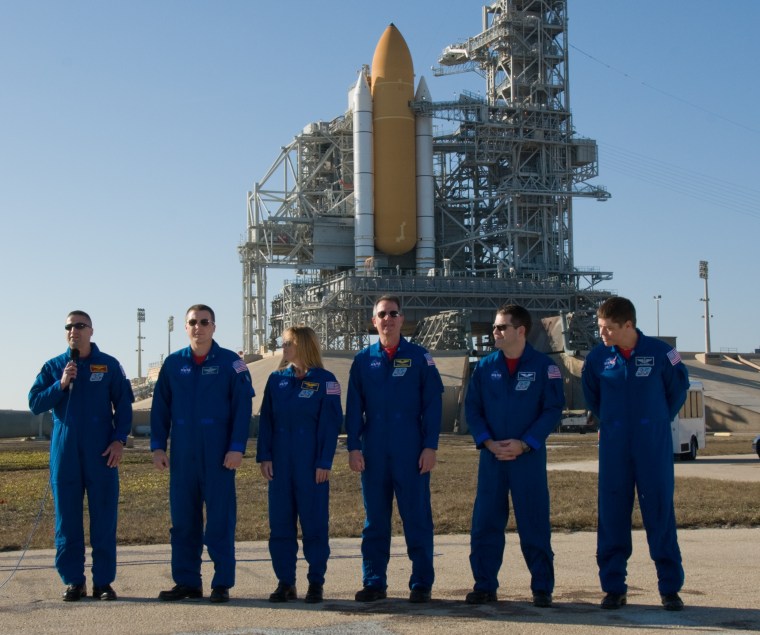NASA begins its final year of shuttle flights with the launch of six astronauts aboard the space shuttle Endeavour, carrying the last major pieces of the International Space Station.
The STS-130 mission is delivering and installing the Tranquility connecting node as well as a seven-window observation station known as the Cupola. The schedule calls for three spacewalks to hook up all the connections. Other tasks include repairing the space station's urine-recycling system and delivering a ton of supplies and experiments.
After STS-130, NASA is planning only four more space shuttle flights. Here's a look at the crew for Endeavour's mission:
Shuttle commander George Zamka is personally delivering some special rocks to the International Space Station: four chips from the moon and a stone from the top of Mount Everest.
The fragments of moon rock were gathered by Neil Armstrong and Buzz Aldrin in 1969, and carried up Mount Everest by a former shuttle astronaut last spring. Zamka accepted the rocks last month and said he would make sure they got into the new space station compartments flying up on Endeavour. They will serve, he said, “as a reminder to all of the astronauts who are up there, what human beings can do and what our challenges are.”
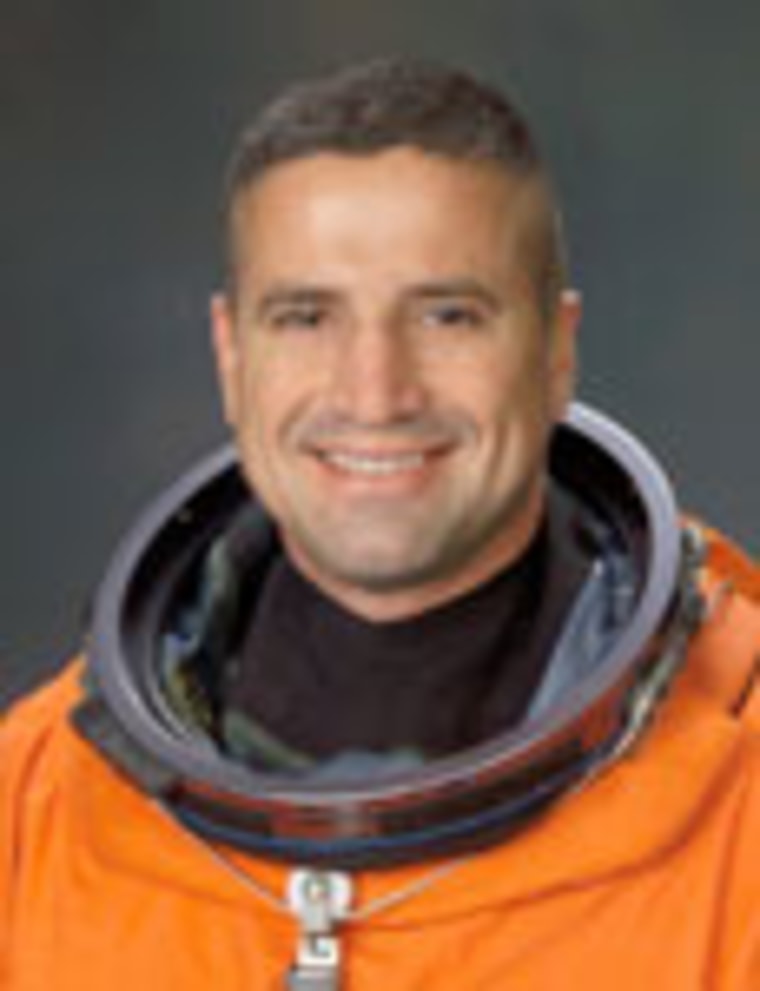
This is Zamka’s second spaceflight in his 12 years as an astronaut.
The 47-year-old Marine colonel grew up in New York, Rochester Hills, Mich., and Medellin, Colombia, his mother’s hometown. He recalls watching planes fly over his Medellin school on final approach to the airport. It was “a great enticement” for pursuing an aviation career. His Colombian pilot uncle also was an influence.
Zamka went on to become a fighter pilot. He and wife Elisa have a 15-year-old girl and 8-year-old boy.
Pilot Terry Virts’ childhood revolved around the space program.
He grew up in Columbia, Md., not far from Goddard Space Flight Center, where his parents worked. Mom was a secretary, and dad was a technician for NASA’s Landsat satellites.
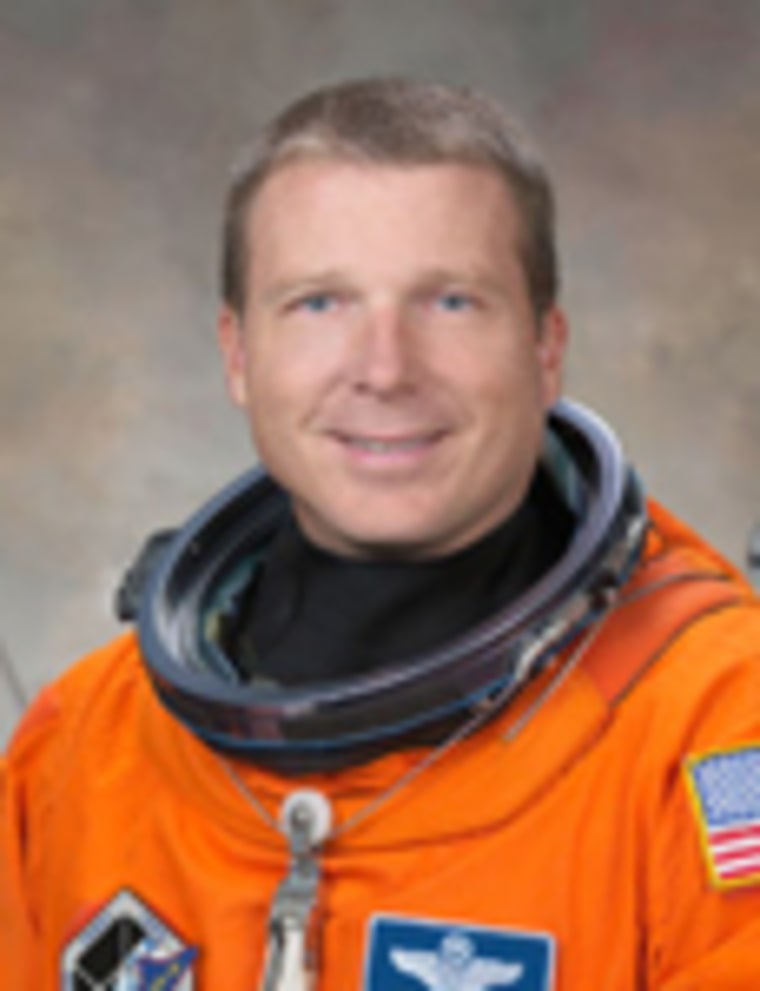
Virts, 42, said his first book as a child was about the Apollo moon landings and his bedroom was adorned with rocket and airplane posters. He’d occasionally accompany his father to the satellite control room at Goddard in the 1970s.
“It’s kind of strange, from being a little kid there at NASA, and now here I am,” he said.
Virts joined the Air Force and became a fighter pilot and, ultimately, a colonel. NASA picked him as an astronaut in 2000. He’s waited 10 years for his first spaceflight.
He acknowledges “it’s obviously a dangerous thing,” but draws strength from the weekly prayers offered up for him at his church and his children’s school back home in Houston. Wife Stacy is a substitute teacher. They have an 8-year-old girl and 11-year-old boy.
Stephen Robinson’s last two shuttle flights were high on the media radar. John Glenn was his crew mate in 1998, and his next mission in 2005 was the first to follow the Columbia disaster.
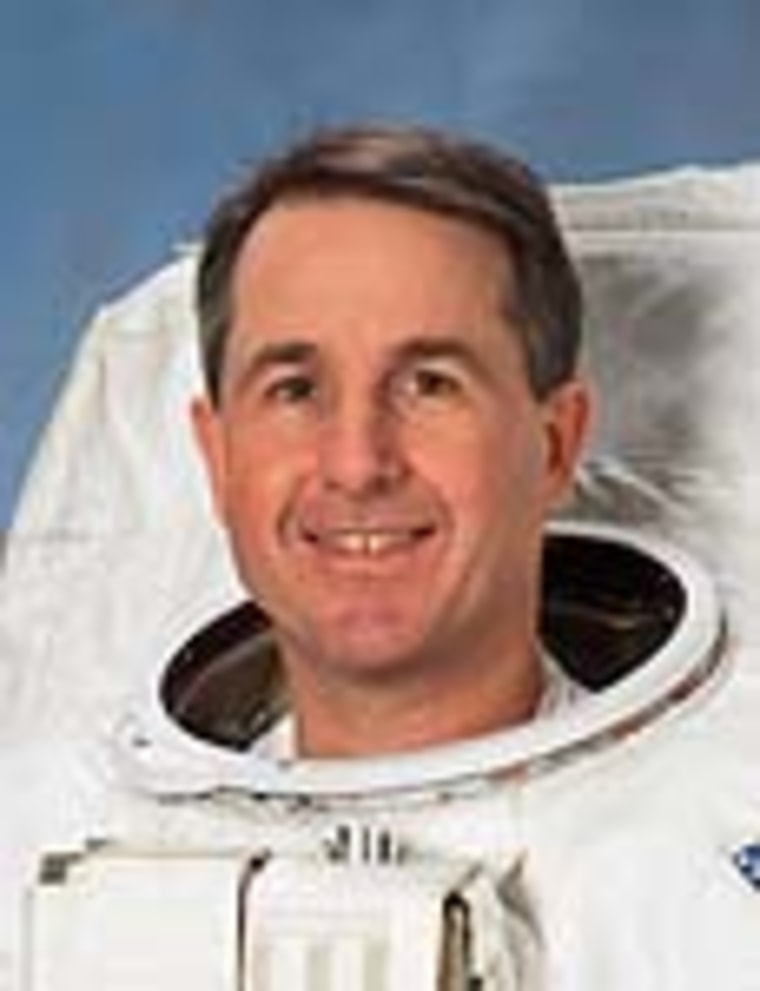
He’s enjoying the low profile this time around. “I prefer to be on the side of the camera that isn’t shining,” Robinson said.
Robinson, 54, a mechanical engineer from Sacramento, Calif., started working for NASA in 1975 while in college. After stints as a graphic artist, surveyor and radio DJ, he signed on full time in 1979 as a research scientist. The astronaut corps came calling in 1995. This is his fourth shuttle mission.
“To be there for the last module to go up is just a wonderful opportunity, I think, for all of us. And it’s a little bittersweet, too, you know,” he said. “There’s ... an impending sense of completion for the space station. Now it’s going to start being used more and more as a laboratory, the whole reason it was built, so we’re all really excited about that.”
Robinson will supervise the three spacewalks from inside. On his last flight, he had to venture beneath the shuttle’s belly to remove some fabric that was jutting out, so he and his crew could return safely to Earth. Monitoring from inside this time is like being an air traffic controller, he said, or an orchestra conductor.
Speaking of music, Robinson plays in two bands and is learning the steel guitar and cello. He plans to serenade his crew mates in orbit, playing the guitar that’s already at the space station.
Kay Hire used to launch space shuttles. Now she flies in them.
The 50-year-old Navy Reserve captain is making her second spaceflight — and her first in 12 years.
She grew up in Mobile, Ala., the daughter of a land surveyor. She’d use her father’s surveying equipment to look at craters on the moon. “I was just totally fascinated” with space, she said.
Hire was commissioned as a Naval officer in 1981 and, 12 years later, became the first woman in the U.S. military to be assigned to a combat air crew. She took part in Atlantic and Caribbean patrol operations.
She began working at Kennedy Space Center in 1989 as an engineer and became an astronaut in 1995. She rocketed into orbit in 1998, then was recalled to active naval duty.
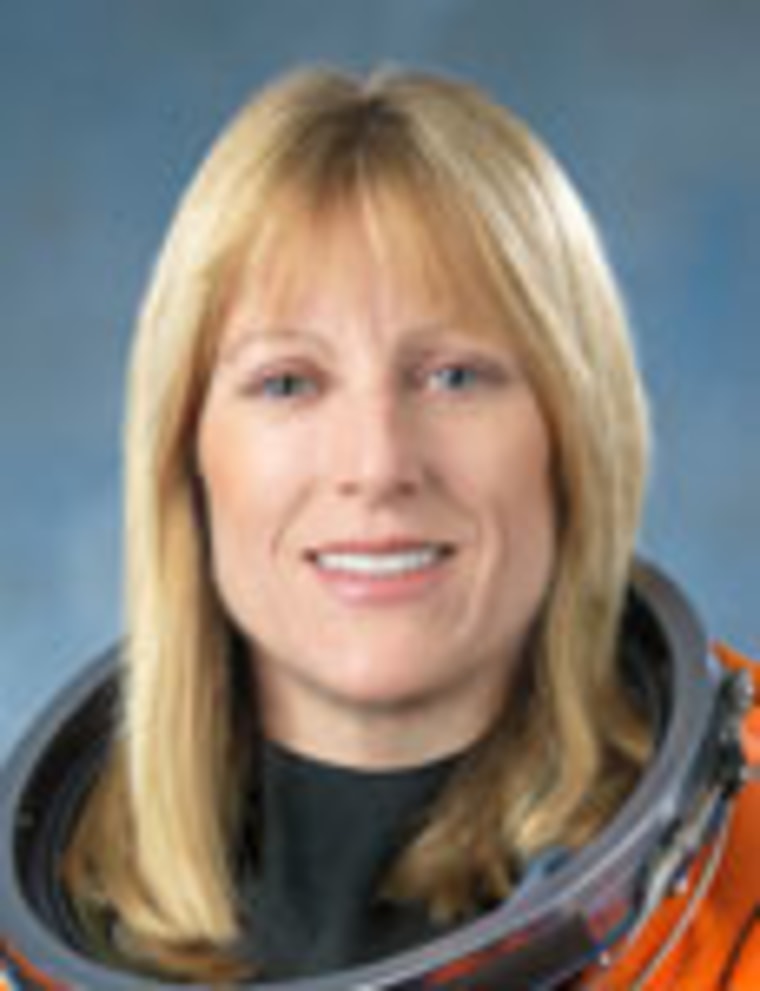
Hire will help operate the shuttle robot arm and raise the window shutters of the new space station lookout, once it’s in the proper place. The domed observation deck will offer panoramic views of Earth and outer space.
“Honestly, I’m not really hung up on being the first one” to look out the windows, she said, “just so long as I get a view at some point.”
Robert Behnke, the son of a construction worker, grew up riding in dump trucks and on backhoes long before Bob the Builder became a hit on children's TV.
Now, Behnke really is Bob the Builder, tackling the last major construction job at the International Space Station. As lead spacewalker, he will venture outside three times, helping to install a new space station room as well as a lookout.

The mechanical aptitude he picked up as a child in St. Ann, Mo., is paying off now. “It really does match up well,” he said.
Behnken, 39, who has a Ph.D. in mechanical engineering, is making his second shuttle flight in two years. He became an astronaut in 2000.
He is married to astronaut Megan McArthur, who flew to the Hubble Space Telescope in May. They had been married just a month in 2008 when Hurricane Ike submerged their Houston home with 3 feet of water. Their new house is almost finished — on the same property, but with flood guards.
Nicholas Patrick was inspired by the Apollo moon landings, so much so that he left his native England to pursue a career in aviation and aerospace.
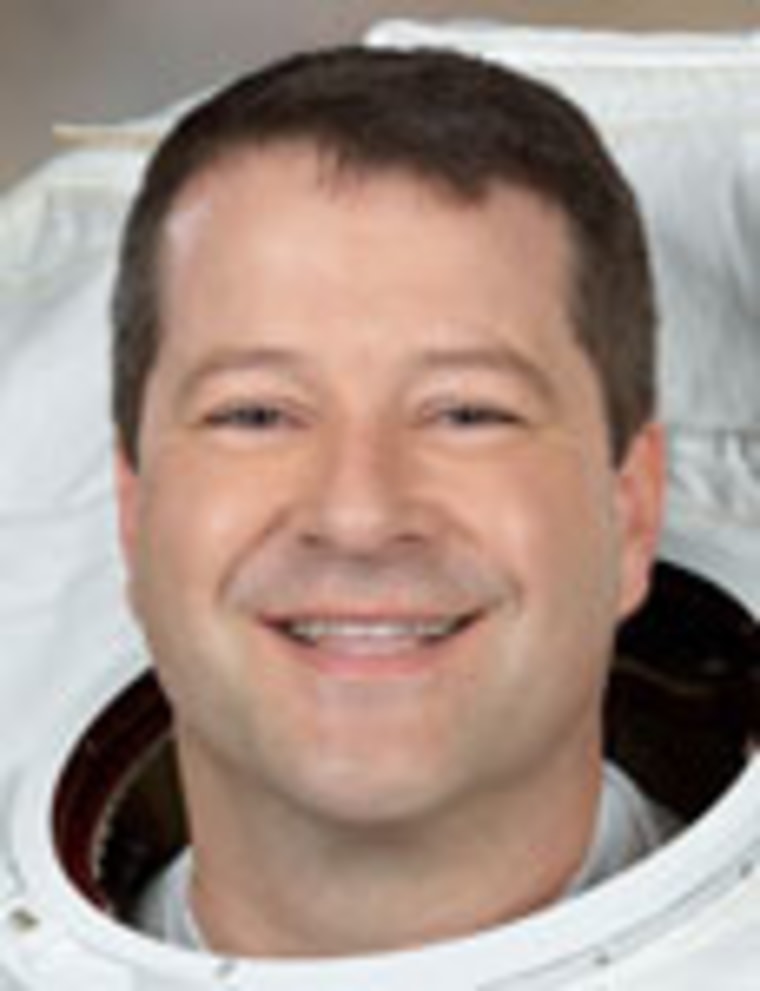
After working for General Electric and Boeing as an engineer, Patrick was selected by NASA as an astronaut in 1998. He flew to the space station in 2006.
Patrick, 45, will perform three spacewalks on this mission, helping to install a new room at the International Space Station. He will undo the big bolts holding down the window shutters on the new observation deck and, once the shutters are cranked open from inside, take pleasure in looking at the nine faces looking out at him.
The space station is “as big as it’s ever been, and we’ll make it bigger,” he said.
His wife, Dr. Rossanna Palomino, is a pediatrician. They have two boys and one girl, ages 3 to 7.
He was born in North Yorkshire and became a U.S. citizen in 1994.
This report includes information from The Associated Press, Reuters and NASA.
